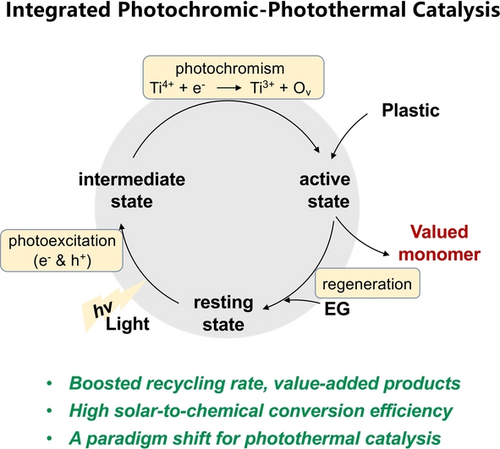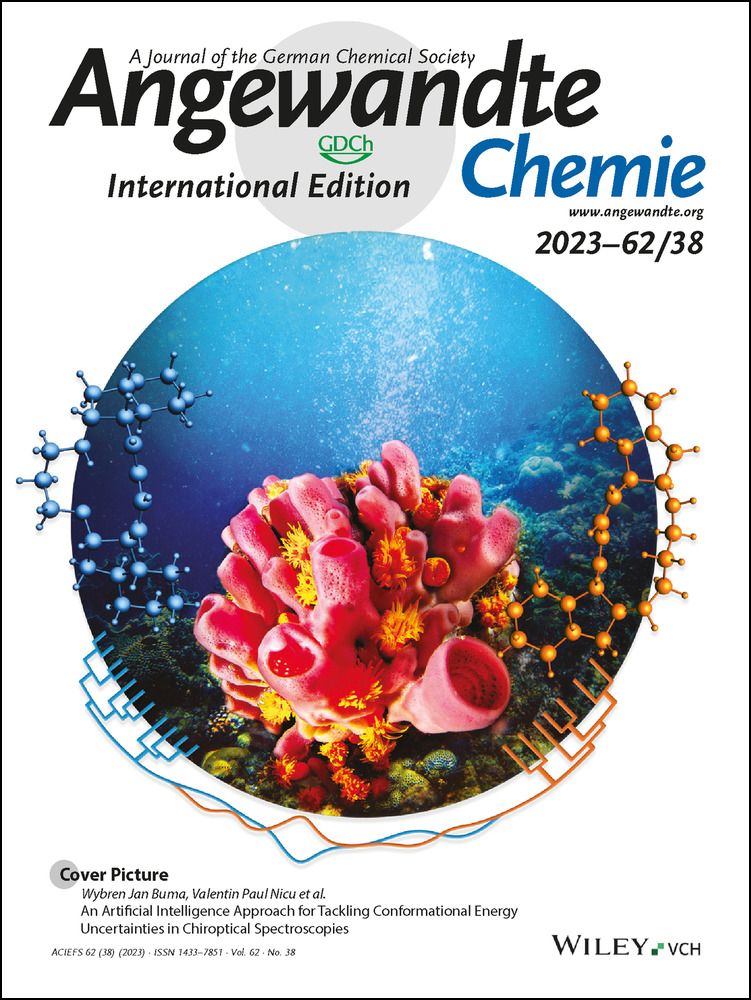Integrated Photochromic-Photothermal Processes for Catalytic Plastic Upcycling
Graphical Abstract
We surpass the limitation of the existing photothermal catalysis mechanism and propose a photochromic-photothermal catalytic system based on polyol-ligated TiO2 nanocrystals. Upon sunlight irradiation, the chemically bonded polyols capture holes generated by TiO2, enabling photogenerated electrons to reduce Ti4+ to Ti3+ and produce oxygen vacancies. This process boosts photothermal efficiency and facilitates polyester glycolysis efficiency.
Abstract
Incorporating high-energy ultraviolet (UV) photons into photothermal catalytic processes may enable photothermal-photochemical synergistic catalysis, which represents a transformative technology for waste plastic recycling. The major challenge is avoiding side reactions and by-products caused by these energetic photons. Here, we break through the limitation of the existing photothermal conversion mechanism and propose a photochromic-photothermal catalytic system based on polyol-ligated TiO2 nanocrystals. Upon UV or sunlight irradiation, the chemically bonded polyols can rapidly capture holes generated by TiO2, enabling photogenerated electrons to reduce Ti4+ to Ti3+ and produce oxygen vacancies. The resulting abundant defect energy levels boost sunlight-to-heat conversion efficiency, and simultaneously the oxygen vacancies facilitate polyester glycolysis by activating the nucleophilic addition-elimination process. As a result, compared to commercial TiO2 (P25), we achieve 6-fold and 12.2-fold performance enhancements under thermal and photothermal conditions, respectively, while maintaining high selectivity to high-valued monomers. This paradigm-shift strategy directs energetic UV photons for activating catalysts and avoids their interaction with reactants, opening the possibility of substantially elevating the efficiency of more solar-driven catalysis.
Conflict of interest
The authors declare no conflict of interest.
Open Research
Data Availability Statement
The data that support the findings of this study are available from the corresponding author upon reasonable request.





